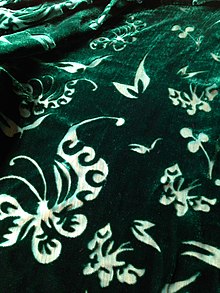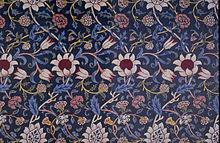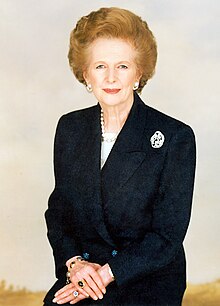

Aesthetics in textiles is one of the basic concepts of serviceability of textiles. It is determined by the perception of touch and sight. Aesthetics imply the appearance and attraction of textile products; it includes the color and texture of the material. It is a statement about the end user (consumer) and the target market. When combined with fabric construction, the finish of the clothing material, garment fit, style, and fashion compatibility, colours create an aesthetic comfort. All of these elements work together to satisfy our visual perception. Aesthetics incorporates the role of evaluation (analysing and judging) also.
There are various arts and applications that imparts aesthetic properties in textiles. Additionally, the use of LEDs and optical fibres enables the creation of aesthetic properties such as illuminated textiles.
History

From antiquity until the eighteenth century, the majority of textiles were crafted and decorated by hand. Human ingenuity and the urge to improve one's appearance led, over time, to the development of complex fabrics and, in the last hundred years, to remarkable technological advancement.
Self-decoration is prevalent in societies and is a fundamental human characteristic. Clothing's decorative values are regarded as primary. The most important clothing value is "protection" from the elements. Following that, it is a well-known fact that one of the primary reasons for wearing clothes was for self-decoration. Self-decoration is a fundamental aspect of human life. Every culture recorded some form of decoration, even if they were not clothed.
Factors
Aesthetics is defined as the way a textile appears and feels. In terms of aesthetics, the material is a combination of texture, color, and pattern. Material for clothing include fabric (cloth, fur, leather) and accessories (buttons, zips, gemstones, and embellishments, etc.). These aesthetic elements work together to determine how the material looks, fits, and feels.
There are various factors that affect the aesthetics of a textile product; many are listed below. These factors are produced using methods of textiles manufacturing and the application of finishes such as dyeing, printing, glazing, and napping.
Color
Color is a visual characteristic that is described by terms like red, orange, yellow, green, blue, purple, etc. Typically, it is the color of an object that attracts the most attention. Color is one of the primary properties that is noticed when a consumer makes a decision to buy a dress. The colors are distinctive and distinguishable; we frequently refer to clothing by its color, for instance, a "blue shirt."
Luster



Luster is a physical property that makes them appear bright, glossy, and shiny. The amount of light reflected from the surface of a fiber is referred to as its luster. The level of luster is determined by how light reflects off the surface. Certain natural fibers, such as linen and silk, have an inherent luster.
Texture
Texture in textiles characterizes the surface as rough or smooth, which is determined by tactile and visual perception. The texture of textiles is affected by yarn manipulations, finishing techniques, and fabric structures.
Drape
Drape (draping or fabric drape) is the property of different textile materials how they fold, fall, or hang along with a three-dimensional body. Draping depends upon the fiber characteristics and the flexibility, looseness, and softness of the material. Drape finishes can also alter the draping properties of clothes.
Hand
Hand or hand feel in textiles is the property of fabrics related to the touch that expresses sensory comfort. It refers to the way fabrics feel against the skin or in the hand and conveys information about the cloth's softness and smoothness.
Techniques of improving aesthetics in textiles
Texturising
The fibres, which serve as the building blocks, contribute to the aesthetic appeal of a fabric. Natural fibres have inherent aesthetics, whereas synthetic fibres are altered during the manufacturing process to meet desired specifications. Texture in textiles refers to the surface's roughness or smoothness, as determined by tactile and visual perception. Yarn manipulations, finishing techniques, and fabric structures all have an impact on textile texture. Textile fibers come in a variety of shapes and forms. The fiber shape of synthetic fibers is controlled with a device spinneret during manufacturing (extrusion) process, whereas natural fibers conceive their shape with a variety of factors such as cellulose built up in plant fibers, and in silk, the shape of orifice from where the silk fibers are extruded. In hair fibers, it is hair follicle that is responsible for the shape.
| Shape | Characteristics of the fiber |
|---|---|
| Oval or round | Smooth, soft and slippery feel, reflectance value high, poor covering properties. |
| Dog bone | Feels harsher than round shaped fibers, high luster, covering properties excellent. |
| Flat | Reflection of light is higher than that of a round shape. |
| Trilobal | Trilobal fibers have three sides. They feel like silk fibers and their reflection of light is higher than those round shaped fibers. |
| Pentalobal | Pentalobal is a structure resembling a five-sided star. The Pentalobal shaped fibre imparts a subtle sheen and bulkiness. |
| Octolobal | Octolobal, a shape with compressed hexagons. The fibers with Octolobal shape have subdued luster. Flatter sides reflect or disperse the light. |
| Multilobal | Multilobal, a fibre shape characterised by a large number of pentalobal lobes. Each lobe reflects light in some way. |
Blending
Blending of textile fibers, and yarns during manufacturing also results in various aesthetic effects such as Devoré, and Heather, etc.
Zari
Zari is used in brocade; these are the threads of gold or silver.
Brocade
Brocade is a decorative weaving.
Embroidery
Embroidery is the art or handicraft of decorating fabrics with thread patterns using a needle.
Finishing

Finishing of textiles include improving of looks and functionality of the treated goods.
Dyeing
Dyeing is the process of applying color to textiles.
Printing
Textile printing is a method of applying patterns to textile materials with various printing techniques.
Aesthetic finishes
There is a range of textile finishes that alter the appearance and feel of the textiles.
Mechanical finishes
Mechanical finish signifies machine finishes such as embossing, heat setting, sanforizing, sheering, various, luster imparting, surface finishes, and glaze finishes.
| Raised surface finishes | Luster imparting | Glaze and design |
|---|---|---|
| Gigging | Calendering | Embossing |
| Napping | Beetling | Moire |
| Sueding | ||
| Flocking |
Calendering can be done in a variety of ways, including moiréing, embossing, glazing and ciréing. The fabric is passed through heated cylinders to achieve a variety of finishes with varying surface effects.
Chemical finishes
Chemical finishes is a part of the textile finishing process where the emphasis is on chemical substances instead of mechanical finishing. These are some chemical finishes that change the surface characteristics:
- Silk surfacing, is a surface finishing of cotton to obtain an appearance similar to silk.
- Parchmentising, is an acid finish that turns the cellulosic fabrics into crisp and sheer fabrics such as Organdy.
- Wrinkle-resistant finish is a finish that capacitates treated fabric with wrinkle resistant.
- Deweighting, or weight reduction, is a treatment for polyester to make it like silk. The treatment peels the surface and reduces the fiber weight and strength while making them softer and finer. Additionally, the treatment enhances the absorbency of the treated substrates.
Evaluation
Most of the aesthetic properties of textile materials are subjective and determined by visual and tactile sensations. However, some of them are measurable with KES (Kawabata evaluation system). The system is equipped with standardised testing machines capable of objectively determining specific physical properties. KES-F can be used to determine the fabric's roughness and smoothness, friction, sheerness, thickness, tensile strength, elasticity, drape, and compression, among other properties.
Significance
Henry David ThoreauIt is an interesting question how far men would retain their relative rank if they were divested of their clothes.
Users have five basic performance criteria to consider: appearance (aesthetics of the product), comfort, durability, maintenance, and cost. According to the consumer preference study, the appearance factor is considered one of the top priorities when making buying decisions about clothing. Aesthetics in textiles is important in many ways, clothing is a visual signifier. It has communicative powers.
Semiotics of dress
The study of semiotics deciphers the ways in which ideologies get transmitted through dress. The study of how people use clothing and adornments to signify cultural and societal status is known as the "semiotics of dress."
Fashion symbolism

Different cultures, occasions, and social statuses command specific aesthetics that include clothing and decorations.
The art of applying design, aesthetics, clothing construction, and natural beauty to clothing is known as fashion design. Fashion symbolism is used in fashion designs to convey expressive content and emotions by fashion designers. In fashion symbolism, fashion designs can communicate emotions like "excitement, calmness, strength, and delicacy" through aesthetic expression.
The term "power dressing" refers to a fashion trend popular in the 1970s and 1980s in the business and political worlds. During the 1960s, Jackie Kennedy was a great fashion icon for American women, and her style became a sign of wealth, power, and distinction.
Personal appearance
Personal appearance is important because others judge us based on how we look. When meeting someone for the first time, the first seven to ten seconds have a significant impact on others. Most certainly, it is based on physical appearance.
Problems
Pilling, Color fastness (staining of certain fabrics), and snagging are a few problems associated with aesthetics in synthetic textiles.
See also
- Product development (textiles)
- Surface contour (fiber)
- Cross section (fiber)
- Texturizing
- Structuralism
- Visual sociology
References
- ^ Kadolph, Sara J. (2007). Textiles. Internet Archive. Upper Saddle River, N.J. : Pearson Prentice Hall. pp. 24, 28. ISBN 978-0-13-118769-6.
- ^ Kadolph, Sara J. (1998). Textiles. Internet Archive. Upper Saddle River, N.J. : Merrill. pp. 11, 22, 23. ISBN 978-0-13-494592-7.
- Li, Yan; Wong, A. S. W. (24 April 2006). Aesthetic Comfort – an overview | ScienceDirect Topics. Elsevier Science. ISBN 978-1-85573-925-3. Archived from the original on 2021-06-02. Retrieved 2022-01-24.
- DeLong, Marilyn Revell (1998). The way we look : dress and aesthetics. Internet Archive. New York : Fairchild Publications. p. 2. ISBN 978-1-56367-071-8.
- ^ "Aesthetic Property – an overview | ScienceDirect Topics". www.sciencedirect.com. Archived from the original on 2022-01-24. Retrieved 2022-01-24.
- Joseph, Marjory L. (1977). Introductory textile science. Internet Archive. New York : Holt, Rinehart and Winston. p. 5. ISBN 978-0-03-089970-6.
- Horn, Marilyn J. (1968).pp.6–7
- ^ Horn, Marilyn J. (1968). The second skin: an interdisciplinary study of clothing. Internet Archive. Boston, Houghton Mifflin. pp. 8, 9.
- Tortora, Phyllis G. (1998). Survey of historic costume : a history of Western dress. Internet Archive. New York : Fairchild Publications. ISBN 978-1-56367-142-5.
- Williams, Bryan; Attwood, Louise; Treuherz, Pauline; Larby, Dave; Fawcett, Ian; Hughes, Dan (2017-09-25). AQA GCSE (9-1) Design and Technology: Textile-Based Materials. Hodder Education. p. 187. ISBN 978-1-5104-0214-0. Archived from the original on 2022-03-06. Retrieved 2022-01-30.
- ^ Sproles, George B.; Burns, Leslie Davis (1994). Changing appearances : understanding dress in contemporary society. Internet Archive. New York : Fairchild Publications. pp. 10, 219. ISBN 978-1-56367-014-5.
- Maycock, Mark M. (1896). A Class-book of Color: Including Color Definitions, Color Scaling, and the Harmony of Colors. Milton Bradley. p. 47. Archived from the original on 2022-03-06. Retrieved 2022-01-29.
- ^ Steele, Valerie (2015-08-01). The Berg Companion to Fashion. Bloomsbury Publishing. p. 159. ISBN 978-1-4742-6470-9. Archived from the original on 2022-03-06. Retrieved 2022-01-29.
- Joseph, Marjory L. (1992). Joseph's introductory textile science. Internet Archive. Fort Worth : Harcourt Brace Jovanovich College Publishers. p. 24. ISBN 978-0-03-050723-6.
- Llewellyn-Jones, Lloyd; Davies, Glenys (2007). Greek and Roman Dress from A to Z. Routledge. p. 113. ISBN 978-1-134-58916-6. Archived from the original on 2022-03-06. Retrieved 2022-01-28.
- Priest; Faiola-Priest, Theodora (1990). Guide to Clothing. McGraw-Hill School Division. p. 123. ISBN 978-0-07-050943-6. Archived from the original on 2022-03-06. Retrieved 2022-01-28.
- Hollen, Norma R.; Saddler, Jane (1968), p.10
- Schindler, W. D.; Hauser, P. J. (10 August 2004). Fabric Hand – an overview | ScienceDirect Topics. Elsevier Science. ISBN 978-1-85573-905-5. Archived from the original on 2022-01-24. Retrieved 2022-01-24.
- Hollen, Norma R.; Hollen, Norma R. Textiles (1988). Textiles. Internet Archive. New York : Macmillan. p. 5. ISBN 978-0-02-367530-0.
- Treuherz, Pauline; Dick, Amanda; Davies, Denise (2018-03-12). AQA AS/A-Level Design and Technology: Fashion and Textiles. Hodder Education. p. 6. ISBN 978-1-5104-1367-2. Archived from the original on 2022-03-06. Retrieved 2022-01-30.
- Kadolph (2009). Textiles. Pearson Education. pp. 24, 28. ISBN 978-81-317-2570-2. Archived from the original on 2022-01-05. Retrieved 2022-01-29.
- Hollen, Norma R.; Saddler, Jane (1968). Textiles. Internet Archive. New York, Macmillan. pp. 6, 7.
- Gioello, Debbie Ann (1982). Understanding fabrics : from fiber to finished cloth. Internet Archive. New York : Fairchild Publications. ISBN 978-0-87005-377-1.
- Hollen, Norma Rosamond (1979). Textiles. Internet Archive. New York : Macmillan. p. 143. ISBN 978-0-02-356130-6.
- Mahapatra, N. N. (2016). Sarees of India. Woodhead Publishing India PVT. Limited. p. 24. ISBN 978-93-85059-69-8. Archived from the original on 2022-03-06. Retrieved 2022-02-15.
- Shukla, Pravina (2015-10-16). The Grace of Four Moons: Dress, Adornment, and the Art of the Body in Modern India. Indiana University Press. p. 88. ISBN 978-0-253-02121-2. Archived from the original on 2022-03-06. Retrieved 2022-02-15.
- "brocade | Etymology, origin and meaning of brocade by etymonline". www.etymonline.com. Archived from the original on 2022-02-15. Retrieved 2022-02-15.
- Gostelow, Mary (1977). Embroidery : traditional designs, techniques and patterns from all over the world. Internet Archive. London : Marshall Cavendish. pp. 1–10. ISBN 978-0-85685-236-7.
- Aspland, J. Richard (1997). Textile Dyeing and Coloration. AATCC. pp. 1–10. ISBN 978-0-9613350-1-4. Archived from the original on 2022-03-06. Retrieved 2022-02-15.
- Cole, Alan Summerly (1911). "Textile-printing" . In Chisholm, Hugh (ed.). Encyclopædia Britannica. Vol. 26 (11th ed.). Cambridge University Press. pp. 694–708.
- ^ Joseph, Marjory L. (1992). Joseph's introductory textile science. Internet Archive. Fort Worth : Harcourt Brace Jovanovich College Publishers. pp. 336, 337, 338, 339, 340. ISBN 978-0-03-050723-6.
- Cadigan, Erin (2014-02-13). Sourcing and Selecting Textiles for Fashion: Sourcing and Selection. A&C Black. p. 76. ISBN 978-2-940496-10-5. Archived from the original on 2022-03-06. Retrieved 2022-01-29.
- Schindler, W. D.; Hauser, P. J. (2004-08-10). Chemical Finishing of Textiles. Elsevier. pp. 1, 2. ISBN 978-1-84569-037-3. Archived from the original on 2022-01-29. Retrieved 2022-01-29.
- "textile – Finishes enhancing appearance | Britannica". www.britannica.com. Archived from the original on 2022-01-31. Retrieved 2022-01-31.
- Schindler, W. D.; Hauser, P. J. (2004-08-10). Chemical Finishing of Textiles. Elsevier. pp. 1–20. ISBN 978-1-84569-037-3. Archived from the original on 2022-03-06. Retrieved 2022-01-29.
- Nystrom, Paul Henry (1916). Textiles. D. Appleton. p. 228. Archived from the original on 2022-03-06. Retrieved 2022-02-05.
- Joseph, Marjory L. (1992). Joseph's introductory textile science. Internet Archive. Fort Worth : Harcourt Brace Jovanovich College Publishers. p. 343. ISBN 978-0-03-050723-6.
- Potter, Maurice David; Corbman, Bernard P. (1959). Fiber to fabric. New York, Gregg Pub. Division., McGraw-Hill. pp. 105, 106 – via Internet Archive.
- Kolanjikombil, Mathews (2019). Pretreatment of Textile Substrates. Woodhead Publishing India. pp. 116, 117. ISBN 978-93-85059-99-5.
- ^ "Kawabata Evaluation System – Textile Protection And Comfort Center – NC State University". Textile Protection And Comfort Center. Archived from the original on 2022-02-15. Retrieved 2022-02-15.
- Allerkamp, Dennis (2010-09-08). Tactile Perception of Textiles in a Virtual-Reality System. Springer Science & Business Media. p. 53. ISBN 978-3-642-13974-1. Archived from the original on 2022-03-06. Retrieved 2022-02-18.
- Johnson, James S.; Mansdorf, Seymour Zack (1996). Performance of Protective Clothing: Fifth volume. ASTM International. p. 329. ISBN 978-0-8031-1987-1. Archived from the original on 2022-03-06. Retrieved 2022-02-18.
- Thoreau, Henry David (1899). Walden: Or, Life in the Woods. T.Y. Crowell. Archived from the original on 2022-03-06. Retrieved 2022-01-29.
- Thoreau, Henry David (2020-07-31). Walden. Google Auto-narrated Demo. Archived from the original on 2022-03-06. Retrieved 2022-01-29.
- Smith, Betty F.; Block, Ira (1982). Textiles in Perspective. Prentice-Hall. p. 19. ISBN 978-0-13-912808-0. Archived from the original on 2022-03-06. Retrieved 2022-01-30.
- Binggeli, Corky (2013-08-26). Materials for Interior Environments. John Wiley & Sons. pp. 15–98. ISBN 978-1-118-42160-4. Archived from the original on 2022-03-06. Retrieved 2022-01-30.
- ^ White, Carolyn L. (2005). American Artifacts of Personal Adornment, 1680–1820: A Guide to Identification and Interpretation. Rowman Altamira. p. 4. ISBN 978-0-7591-0589-8. Archived from the original on 2022-03-06. Retrieved 2022-01-28.
- Barthes, Roland (1990-07-25). The Fashion System. University of California Press. ISBN 978-0-520-07177-3. Archived from the original on 2022-03-06. Retrieved 2022-01-28.
- Barthes, Roland (2013-10-24). The Language of Fashion. A&C Black. ISBN 978-1-4725-3432-3. Archived from the original on 2022-03-06. Retrieved 2022-01-28.
- Owyong, Yuet See Monica (2009-06-01). "Clothing semiotics and the social construction of power relations". Social Semiotics. 19 (2): 191–211. doi:10.1080/10350330902816434. ISSN 1035-0330. S2CID 144239853. Archived from the original on 2022-03-06. Retrieved 2022-01-28.
- Phelan, Hayley (10 April 2014). "Margaret Thatcher Set the Bar for Power Dressing". Fashionista. Archived from the original on 2022-03-06. Retrieved 2022-01-28.
- Harlow, Mary (2018-11-01). A Cultural History of Dress and Fashion in Antiquity. Bloomsbury Publishing. p. 152. ISBN 978-1-350-11403-6. Archived from the original on 2022-03-06. Retrieved 2022-01-28.
- Adams, Reginald B.; Adams, Reginald B. Jr.; Ambady, Nalini; Nakayama, Ken; Shimojo, Shinsuke (2011). The Science of Social Vision: The Science of Social Vision. OUP USA. p. 198. ISBN 978-0-19-533317-6. Archived from the original on 2022-03-06. Retrieved 2022-01-28.
- Institute, Kyoto Costume; Fukai, Akiko; Zaidan, Kyōto Fukushoku Bunka Kenkyū (2002). Fashion: The Collection of the Kyoto Costume Institute : a History from the 18th to the 20th Century. Taschen. p. 513. ISBN 978-3-8228-1206-8. Archived from the original on 2022-03-06. Retrieved 2022-01-29.
- Newsweek Staff (1994-08-28). "Return Of The Jackie Look--Sort Of Fashion From A-Line Dresses To Fitted Jackets". Newsweek. Archived from the original on 2022-02-05. Retrieved 2022-02-05.
- Stulz, Karin M.; Shumack, Kellie A.; Fulton-Calkins, Patsy (2012-01-01). Procedures & Theory for Administrative Professionals. Cengage Learning. p. 33. ISBN 978-1-133-71277-0. Archived from the original on 2022-03-06. Retrieved 2022-01-29.
- Family Economics Review. Consumer and Food Economics Institute, Agricultural Research Service, U.S. Department of Agriculture. 1973. p. 10. Archived from the original on 2022-03-06. Retrieved 2022-01-30.